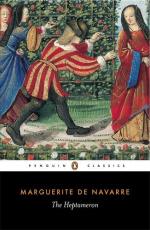This affliction was but the beginning of Margaret’s troubles. Soon afterwards the Constable de Bourbon, in conjunction with Pescara and Lannoy, avenged his grievances under the walls of Pavia. On this occasion, as at Marignano, the Duke of Alencon commanded the French reserves, and had charge of the fortified camp from which Francis, listening to Bonnivet, sallied forth, despite the advice of his best officers. The King bore himself bravely, but he was badly wounded and forced to surrender, after La Palisse, Lescun, Bonnivet, La Tremoille, and Bussy d’Amboise had been slain before his eyes. Charles of Alencon was then unable to resist the advice given him to retreat, and thus save the few Frenchmen who had escaped the arms of the Imperialists. With four hundred lances he abandoned the camp, crossed the Ticino, and reaching France by way of Piedmont, proceeded to Lyons, where he found Louise of Savoy and Margaret.
It has been alleged that they received him with harsh reproaches, and that, unable to bear the shame he felt for his conduct, he died only a few days after the battle. (1)
1 See Garnier’s Histoire de France, vol. xxiv.; Gaillard’s Histoire de France, &c. Odolant Desnos, usually well informed, falls into the same error, and asserts that when the Duke, upon his arrival, asked Margaret to kiss him, she replied, “Fly, coward! you have feared death. You might find it in my arms, as I do not answer for myself.”—Memoires historiques, vol. ii. p. 253.
There are several errors in these assertions, which a contemporary document enables us to rectify. The battle of Pavia was fought on February 14th, 1525, and Charles of Alencon did not die till April 11th, more than a month after his arrival at Lyons. He was carried off in five days by pleurisy, and some hours before his death was still able to rise and partake of the communion. Margaret bestowed the most tender care upon him, and the Regent herself came to visit him, the Duke finding strength enough to say to her, “Madam, I beg of you to let the King know that since the day he was made a prisoner I have been expecting nothing but death, since I was not sufficiently favoured by Heaven to share his lot or to be slain in serving him who is my king, father, brother, and good master.” After kissing the Regent’s hand he added, “I commend to you her who has been my wife for fifteen years, and who has been as good as she is virtuous towards me.” Then, as Louise of Savoy wished to take Margaret away, Charles turned towards the latter and said to her, “Do not leave me.”
The Duchess refused to follow her mother, and embracing her dying husband, showed him the crucifix placed before his eyes. The Duke, having summoned one of his gentlemen, M. de Chan-deniers, instructed him to bid farewell on his part to all his servants, and to thank them for their services, telling them that he had no longer strength to see them. He asked God aloud to forgive his sins, received the extreme unction from the Bishop of Lisieux, and raising his eyes to heaven, said “Jesus,” and expired. (1)




